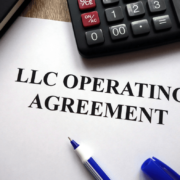2023 Limits and Thresholds for 401(k)s & Other Qualified Retirement Plans
- Learn about contribution limits and catch-up contribution limits for 410(k)s and other defined contribution plans.
- Find the new annual limit on maximum compensation.
- Discover the new threshold for determining who’s a highly compensated employee.
- Learn about changes to SEP contributions and participation.
- Find information about the tax saver’s credit.
- Discover the increased amounts for determining who’s a control employee.
- Learn about changes to the Social Security taxable wage base.
The IRS recently announced the 2023 dollar limits and thresholds for 401(k)s and other qualified retirement plans, reflecting the latest cost-of-living adjustments. Fiducial has some relevant amounts to be aware of:

Contribution limits for 401(k)s and other defined contribution plans
The annual limit on contributions will increase to $22,500 (up from $20,500) for 401(k), 403(b), and 457 plans, as well as for Salary Reduction Simplified Employee Pension plans (SARSEPs). The annual limits will rise to $15,500 (up from $14,000) for Savings Incentive Match Plans for Employees (SIMPLEs) and SIMPLE IRAs.
Catch-up contributions for 401(k)s and other defined contribution plans
The annual limit on catch-up contributions for individuals age 50 and over will increase to $7,500 (up from $6,500) for 401(k), 403(b), and 457 plans, as well as for SARSEPs. The annual limit for SIMPLEs and SIMPLE IRAs will go up to $3,500 from $3,000.
Compensation
The annual limit on the maximum compensation that can be taken into account for certain retirement plan contributions and deductions will rise to $330,000 (up from $305,000).
Highly compensated employees
The threshold for determining who’s a highly compensated employee will increase to $150,000 (up from $135,000).
Key employees
The threshold for determining whether an officer is a “key employee” under the top-heavy rules and the cafeteria plan nondiscrimination rules will rise to $215,000 (up from $200,000).
SEP annual contributions
The limit on annual contributions to these plans will increase to $66,000 (up from $61,000).
SEP participation
The threshold for determining participation in a SARSEP or SEP will rise to $750 from $650.
Saver’s tax credit
The upper-income limit for determining whether specific individuals meet eligibility requirements for the saver’s tax credit (also known as the retirement savings contributions credit) will increase to:
- $73,000 (up from $68,000) for taxpayers who are married and filing jointly,
- $54,750 (up from $51,000) for those filing as a head of household, and
- $36,500 (up from $34,000) for all other taxpayers.
“Control” employees
The amounts for determining who’s a control employee, a classification relevant to the valuation of company fringe benefits, will increase to $130,000 (up from $120,000) for a board or shareholder-appointed, confirmed, or elected officer, and to $265,000 (up from $245,000) for other employees.
Social Security taxable wage base
The annual cost-of-living adjustment to the maximum amount of earnings subject to Social Security tax, which is relevant for various benefit purposes, will rise to $160,200 (up from $147,000). This adjustment was announced in October by the Social Security Administration.
Compared with recent years, many of these amounts have notably increased because of inflation. Employers that sponsor 401(k)s and other defined contribution plans should carefully note the changes. As necessary, they should review and revise employee communications, plan procedures, and administrative forms.
Need more information or help to assess the impact on your retirement plan? Call Fiducial at 1-866-FIDUCIAL or make an appointment at one of our office locations to discuss your situation.
Ready to book an appointment now? Click here. Know someone who might need our services? We love referrals!









